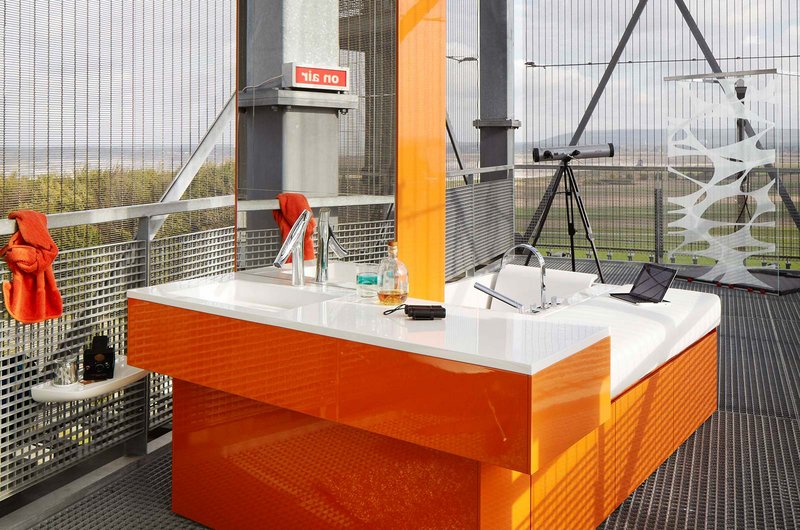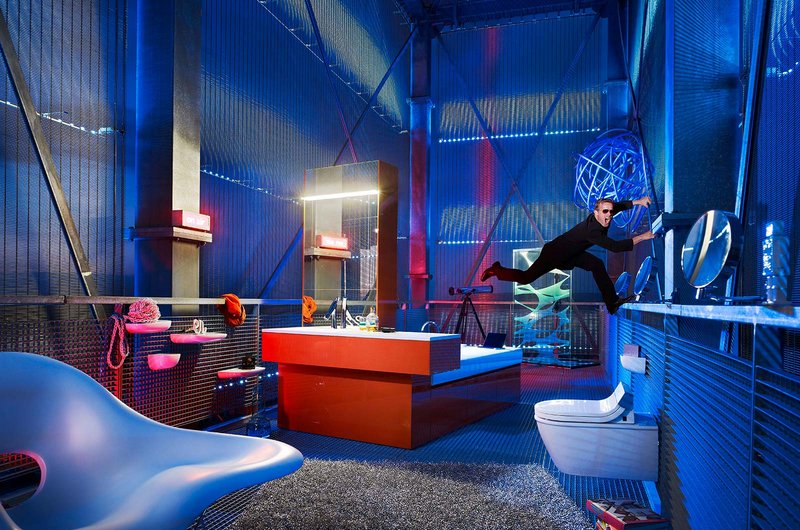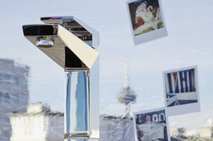
04_ Bathroom (R)Evolution
When it comes to safety, convenience and individualisation, the bathroom of the future won't make any compromises. With Bathroom (R)Evolution, it's the human being that occupies centre stage and shapes his environment to suit his needs.
Bathroom (R)Evolution – on the way to an intelligent feel-good machine
When it comes to safety, convenience and individualisation, the bathroom of the future won't make any compromises. With Bathroom (R)Evolution, it's the human being that occupies centre stage and shapes his environment to suit his needs.
Design has changed the bathroom, made it more aesthetic, more pleasure-oriented, cosier. But now, with the integration of new materials and modern technologies, the bathroom is about to undergo a fundamental transformation. It's time to think about what direction that transformation will go in. For more so than in any other area of the home, designing the bathroom is about designing the interface between the human being and the technology.
Many bathroom users dream of a bathroom that welcomes them with a pleasantly warm ambience in the mornings and prepares them gently for the day. In the dark months of the year, for instance, they want to step into a pre-heated room that doesn't dazzle them with overly bright lighting and plays their favourite music or the news over the radio or display. The tap recognizes the user's wave and, without being touched, sends water at the pre-programmed temperature gurgling into the washbasin. In the evening, the bathroom welcomes him home with atmospheric lighting and a programmed shower sequence, or perhaps with a bathtub that automatically fills itself to the desired depth at the push of a button. Warmed towels and toilet seats, shower toilets and colour programmes for the shower or pre-heated sauna are just some of the other convenience packages the bathroom of the future holds in store for us as (almost) standard features.
And if a car can recognise its driver and click the seat into the right position accordingly, why shouldn't the bathroom follow suit and be wired up as a single unit programmed to serve the individual needs of its user? This can be achieved both by digital technologies and intelligently designed products which, thanks to minimised components, can be extremely slender indeed. Whether they're particularly inconspicuous or particularly striking – the design solutions of the future aren't just a treat for the eyes but for groping hands and unsteady legs as well. Easy-care finishes are just the prelude to an overhaul of surfaces, materials and features that will make the time spent in the bathroom totally worry-free, with no fear of slipping, getting scalded or using the wrong lever under the shower. Safety and freedom from worry are the two most important needs that have to be satisfied, followed by convenience, intimacy and recreational appeal – whether that takes the form of bathtime fun, entertainment, shared experiences or meditation.

Control over water, energy and a self-determined life
When it comes to safety and convenience, the bathroom is a sensitive area. It is no coincidence that "barrier-free" is a catchword in modern bathroom planning, for besides affecting the safety of everyone who uses the bathroom – big or small, handicapped or not – it is also a basic requirement for an ever-growing group of older people who want to live an independent life. Bathroom (R)Evolution puts these needs right at the top of the hierarchy by applying ergonomics not just to the individual sanitary products but to the bathroom as a whole. It turns the bathroom into a pampering machine, a space that attends to our needs and cossets us. And if the ageing user cannot retain complete control of his body, then at least he is in complete control of the room where he lavishes care and attention on it.
In design, ergonomics stands for products and tools with a human shape that is adapted to the human body and human needs. In fact, you could say that ergonomics is the basic law of good design. But the technisation of everyday life hasn't just brought a never-before-seen degree of convenience to our homes, it has brought a new problem area as well: the usability and individualisability of technical products. Older people in particular are (often painfully) aware of this problem when it comes to using telephones and televisions. As a result, interface design is a task not just for computer and display designers but for bathroom designers as well. In future, the sanitary industry too will have to tackle this problem.
Bathroom (R)Evolution aims for a sensuous, intuitive bathroom
The path it has chosen to date aims for a sensuous bathroom that can be used intuitively. That doesn't just involve hands-free technologies for the fittings, lighting and toilet flush; water and smooth surfaces are feasible as projection surfaces for light and – in future – information. Bathroom (R)Evolution is a multimedia phenomenon. The mirror cabinet could for instance become an information centre and database that can store and retrieve medical or cosmetic information as well. In future, product design will increasingly be about finding forms that harmonise with the programming consoles and digital control units.
Designers, however, won't only be concerned with implementing what is technically feasible but with selecting what should be implemented as well, for not every gadget will seem meaningful in the long term. Ultimately, it is no longer merely about the ergonomics of the form, but about the ergonomics of the technical features too. The challenge will not be how to conceal or highlight the technology in order to make it compatible with respective tastes, but to adapt it to people's needs.
Not for dyed-in-the-wool purists
Bathroom (R)Evolution is not for people who like an elemental, back-to-the-roots feel. Puristic design, yes. But apart from that, this bathroom is anything but plain and simple. Instead, everything is crammed full with technical sophistication intended to make the user's life easier. The bathtub fills to a pre-defined maximum level at the push of a button. A night-time lighting programme starts off with dimmed intensity when you set foot in the bathroom between midnight and 6 a.m. In the shower, an individual programme provides a special sequence of selected spray patterns and temperature settings, with spectacular lighting effects and background music thrown in for good measure. Music, weather and traffic reports are relayed as required. The fittings and flush work without being touched and every surface has an antibacterial finish. Once the hygiene routine or fun programme has been completed, there's a Wii console waiting for the technology buff, a gym mat for the yoga disciple or a relaxing armchair for the slightly older amateur golfer. And while they're here, why shouldn't they watch the latest James Bond movie after a nice relaxing bath, or even while they're soaking in the tub?
Products

Ergonomic control concept: the Starck Organic washbasin mixers help use water intuitively, ergonomically and economically.

Revolutionary: SensoWash® makes cleaning yourself with water what it was, is and should be: the most natural thing in the world.

The shower as luminary: LED lights illuminate three-dimensional structures that are applied to the glass surfaces using laser technology.

The height of the two-sided shaving and make-up mirror is adjusted via a slide rail.

Off the wall! The washstand, mirror cabinet and tub are combined in one innovative module in an up-to- the-minute colour.

Mem dispenses with extrovert design and turns the fitting into an interface between the architecture and user instead.